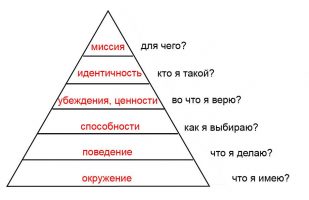Подстройка в НЛП

Эта статья написана в соавторстве с Инной Вайнберг,
талантливым коучем и моей женой.

Вот уже несколько месяцев я веду цикл воркшопов «Набор инструментов менеджера», который заказала мне Открытая Школа Бизнеса. И вот вчера, во время воркшопа по кросс-культурным коммуникациям, я вдруг получаю вопрос: «А что делать, если человек видит, что ты к нему подстраиваешься и его это страшно раздражает?»
Подстройка в НЛП
Что делать, чтобы попытки подстроиться к собеседнику его не раздражали? Вопрос о том, что человека раздражает подстройка к нему, поставил меня в тупик. Правда. Потому что я уверен, что раздражает не подстройка, а скорее ее отсутствие или отстройка. Ну, к примеру, как если бы я рассказал, что вчера умерла моя любимая кошка, которая жила со мной 19 лет и стала членом семьи, а собеседник загоготал и рассказал в ответ анекдот. Или если бы я в какой-то ситуации пошутил и увидел, что все сидят с каменными лицами. Я уверен, что если собеседник в подстройке, то он меня не может раздражать. А если раздражает – значит он не в подстройке.
Давайте поговорим, что такое подстройка. И сразу отойдем от банальных вещей типа «зеркалирование» позы. Есть такая модель, которая называется «пирамида Дилтса». Согласно этой модели, мы воспринимаем мир последовательно, начиная от более конкретных вещей к более абстрактным. Давайте рассмотрим феномен «подстройка» с точки зрения этой модели.
Первый уровень – предметы, объекты. Что я вижу сейчас, разделяя пространство с человеком, к которому я намерен осуществить подстройку? Каков мой фокус восприятия этого пространства? Каков фокус восприятия моего визави? Что он видит в этом пространстве и какова общая для нас область? Могу ли я повлиять на расширение общности? Это общая схема подстройки на примере объектного уровня, которую можно применить на любом уровне пирамиды Дилтса.
Второй уровень — действия. Третий – способности и возможности. Четвертый – убеждения и ценности, пятый – идентичность (кто я), шестой – миссия (для чего я живу).
Таким образом, подстройка в НЛП– это осознанная попытка посмотреть на мир глазами другого, сохранив осознание своего взгляда. Это попытка понять чужие стратегии поведения. Ведь одна из идей НЛП – моделирование успешного поведения приводит к успеху.
Но что тогда раздражает? Мы боимся, что кто-то «слямзит» нашу успешную стратегию и станет таким же успешным? Ммм… возможно, но у действительно успешных людей я такого страха не встречал. Тогда что?
На первом уровне мы можем подстраиваться на разном уровне пирамиды Дилтса. Я могу одеться в таком же стиле, как и мой собеседник, не пытаясь выступить на рабочем собрании во фраке и манишке и не приходя на прием к министру в дырявых джинсах. Я, кстати, по молодости очень любил прийти на совет директоров или в министерство в драных штанах и выношенном свитере… и это было огромной ошибкой. Да, тебя при этом запомнят. Вопрос, КАК тебя при этом запомнят.
Мы можем подстраиваться, зеркалируя жесты. Это подстройка по второму уровню, по уровню действий.
И что происходит, если мы подстроены по первым двум уровням, но совершенно отстроены по уровню способностей, убеждений и ценностей, идентичности? Получится маскарад. Человек, с которым мы общаемся, будет испытывать сильнейший диссонанс и, как следствие, недоверие, страх, агрессию.